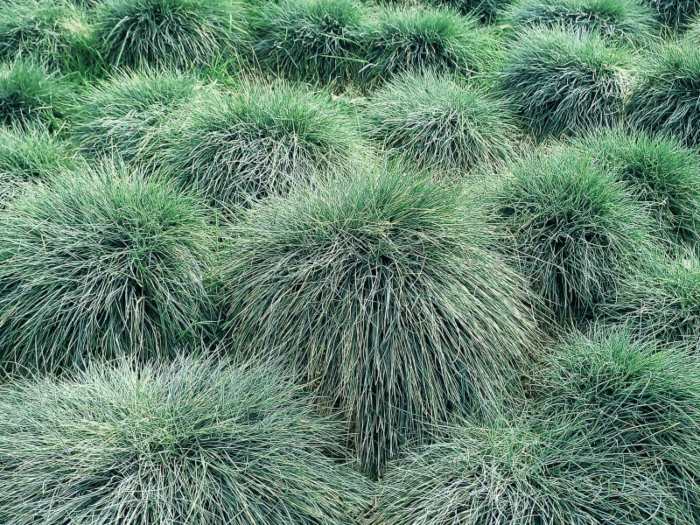The importance of heat-resistant plants
Drought-tolerant, also known as heat-resistant, plants have an important place in gardens and landscapes. These varieties save water and can tolerate dry summers. There is a huge assortment of drought-tolerant plants available but there is a caveat to them. They must be watered and cared for the first year they are planted to establish a strong root system, ensuring they can withstand the heat.
For heat-resistant plants to endure long periods of dry weather, it is necessary to add plenty of organic amendments such as compost or aged manure. These materials will help hold moisture in the soil while the plants are putting on new roots. Add at least 2-3 inches of mulch around the plant to hold in moisture and deter weeds. Start your plants off with deep irrigation the first season to assist in root growth. Use a trowel near the edge of the root zone to evaluate how deep the water is after you water the plant(s). Monitor how quickly the water is absorbed and repeat as needed. Second and third year drought-tolerant plants may not need frequent watering during the hottest summer periods.
Varieties that thrive under the sun
Whether your garden and outdoor spaces need trees, blooms, ground cover, or shrubs, the choices are endless. Some varieties can withstand all-day sun, some require afternoon shade, mainly perennials and ground covers. Below are just a few ideas for your outdoor spaces.

|
Albizia |
Silk Tree |
Sun |
|
Cupressus |
Sun |
|
|
Ficus carica |
Fig (edible) |
Sun |
|
Jugians |
Walnut |
Sun |
|
Picea |
Spruce |
Sun |
|
Pinus |
Pine |
Sun |
|
Quercus |
Oak |
Sun |
|
Robinia |
Locust |
Sun |

|
Arbutus |
Strawberry Bush |
Sun |
|
Caryopteris |
Bluebeard |
Sun |
|
Cercis occidentalis |
Redbud |
Sun |
|
Cistus |
Rockrose |
Sun |
|
Juniperus |
Juniper |
Sun |
|
Lavandula |
Sun |
|
|
Lavatera |
Tree Mallow |
Sun |
|
Lonicera |
Honeysuckle (vine) |
Sun |
|
Rosmarinus |
Rosemary |
Sun |

|
Agapanthus |
Lily of the Nile |
PM shade |
|
Tickseed |
Sun |
|
|
Digitalis |
Foxglove |
PM shade |
|
Echinacea |
Purple Cone Flower |
Sun |
|
Helleborus |
Hellebore |
PM shade |
|
Kniphofia |
Red Hot Poker |
Sun |
|
Oenothera |
Evening Primrose |
Sun |
|
Salvia |
Sun |
|
|
Stachys |
Lamb’s Ears |
Sun |

|
Chasmanthium latifolium |
Northern Sea Oats |
PM shade |
|
Festuca |
Fescue |
Sun |
|
Helictotrichon sempervirens |
Blue Oat Grass |
Sun |
|
Miscanthus |
Maiden Grass |
Sun |
|
Muhlenbergia |
Pink Muhly Grass |
Sun |
|
Panicum |
Switch Grass |
Sun |
|
Stipa |
Needle Grass |
Sun |

|
Aegopodium |
Bishop’s Weed |
PM shade |
|
Anthemis |
Chamomile |
Sun |
|
Cerastium |
Snow in Summer |
Sun |
|
Ceratostigma plumbaginoides |
Plumbago |
Sun |
|
Hypericum |
St. John’s Wort |
Sun |
|
Mahonia |
PM shade |
|
|
Raoulia australilis |
Silver Mat |
Sun |
|
Vinca minor |
Periwinkle |
PM shade |
|
Viola |
Violet |
PM shade |
Planting drought-tolerant plants in the spring or fall when water is plentiful, gives the plants an opportunity to build up their reserves when water could be scarce. Select heat-resistant plants native to your area. They are often remarkably adaptable to local weather variations and extremes; this includes drought as well. Often these plants are not only water-wise, but they often adapt additional aspects of the ecosystem as well.
Likewise, plants native to areas that are famously dry, such as the Southwest region, will probably survive drought conditions elsewhere. Planting drought-tolerant plants will keep your gardens and yards looking amazing through drier, hotter months. Be advised that no plants survive without extra water in summer heat until root systems are established. Don’t wait and get these plants in the ground to enjoy blooms, color, and variety in the future.

I have to write that I truly enjoy your posted articles on various subjects – from houseplants, to trees, to drought tolerant plants. We have a new yard and it has been so helpful reading your articles to decide what to plant, where to plant it and how to care for it. We’re new to the area so learning about the native plants and what can survive here from your posts has been a blessing. Thank you!
In the tree section there was no listing for crepe myrtle. I thought they were fairly drought tolerant in our area after established. Have I been misinformed?
Leave a comment